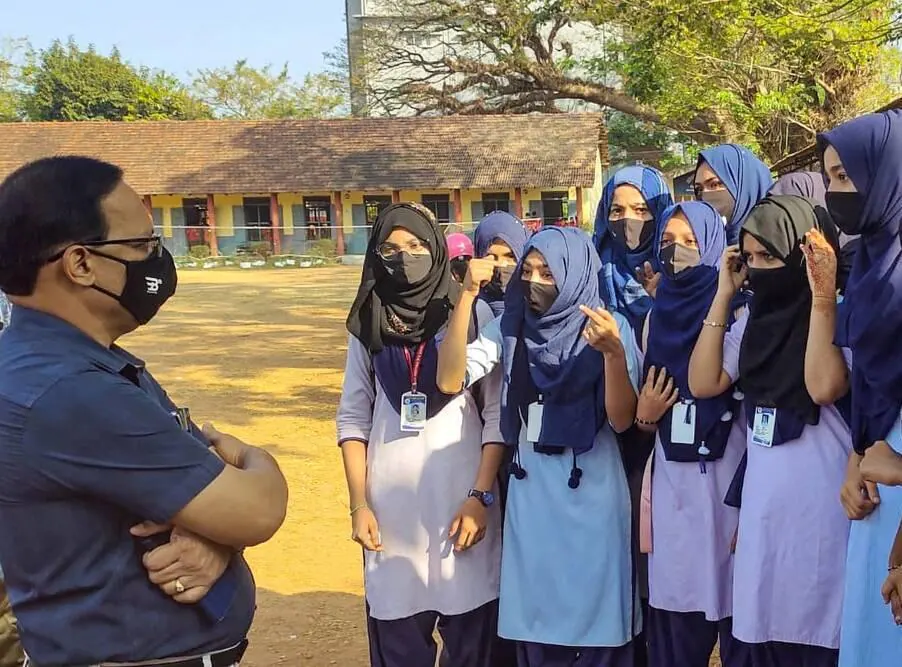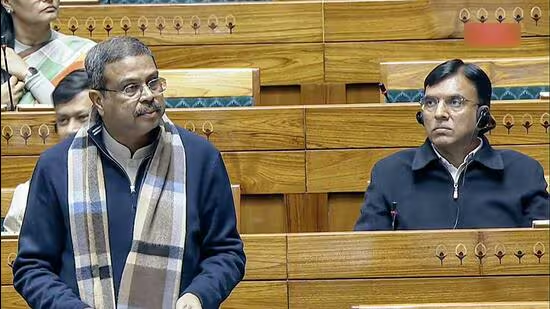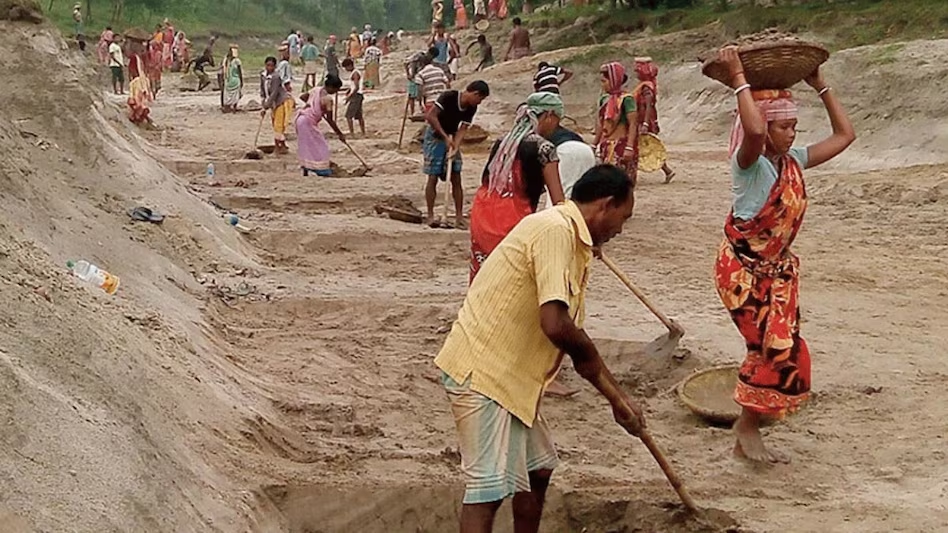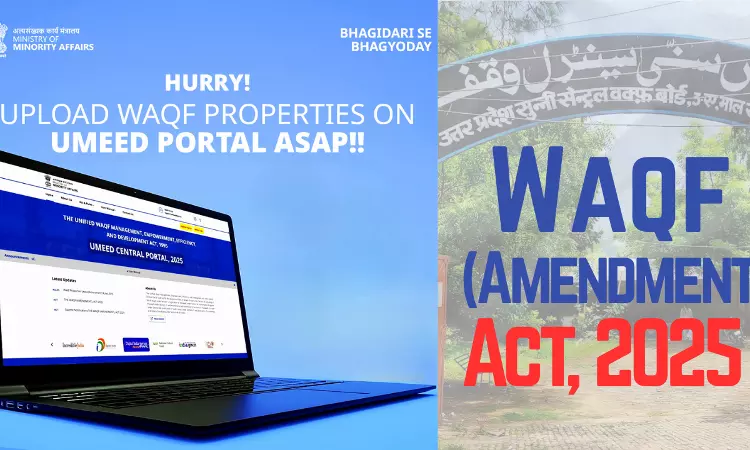Description

Copyright infringement is not intended
Context: Karnataka High Court stated that hijab is not an essential religious practice in Islamic faith.
Details:
- A full bench of the Karnataka High Court stated that the wearing of the hijab by Muslim women does not make up an essential religious practice in Islamic faith.
- The High court mentioned that the prescription of a school uniform is a reasonable restriction on the Right to freedom of Religion under Article 25 of Indian Constitution.
Constitutional Articles related to Freedom of Religion and educational rights
- Article 25 says that all persons are equally entitled to freedom of conscience and the right to freely profess, practice and propagate religion.
- Freedom of conscience: Inner freedom of an individual to frame his relation with God or Creatures in whatever way he desires.
- Right to Profess: Declaration of one’s religious beliefs and faith openly and freely.
- Right to Practice: Performance of religious worship, rituals, ceremonies and exhibition of beliefs and ideas.
- Right to Propagate: Transmission and promotion of one’s religious beliefs to others. But, it does not include a right to convert another person to one’s own religion.
- Article 25 covers religious beliefs and also religious practices (rituals).
- Article 26: Freedom to Manage Religious Affairs, every religious denomination or any of its section shall have the following rights:
- Right to establish and maintain institutions for religious and charitable purposes.
- Right to manage its own affairs in matters of religion.
- Right to own and acquire movable and immovable property.
- Right to administer such property in accordance with law.
- Article 27 - Freedom from Taxation for Promotion of a Religion
- No person shall be forced to pay any taxes for the promotion or maintenance of any particular religion or religious denomination.
- The State should not spend the public money collected by way of tax for the promotion or maintenance of any particular religion.
- This provision prohibits the State from favoring and supporting one religion over the other. This also means that the taxes can be used for the promotion or maintenance of all religions.
- This provision prohibits only levy of a tax and not a fee.
- Article 28 - Freedom from Attending Religious Instruction
- No religious instruction shall be provided in any educational institution wholly maintained out of State funds.
- No person attending any educational institution recognised by the State or receiving aid out of State funds shall be required to attend any religious instruction or worship in that institution without his consent.
- Article 29 - Protection of Interests of Minorities
- It provides that any section of the citizens residing in any part of India having a distinct language, script or culture of its own, shall have the right to conserve the same.
- No citizen shall be denied admission into any educational institution maintained by the State or receiving aid out of State funds on grounds only of religion, race, caste, or language.
- These rights are subject to public order, morality, health and other provisions relating to fundamental rights.
- The State is permitted to regulate or restrict any economic, financial, political or other secular activity associated with religious practice.
How to Draw the Line between Matters of Religion and Matters Other Than Religion?
- The ‘essential practice’ doctrine can be traced to a 1954 decision of the Supreme Court in ‘Shire Mutt’ case. In this Case the Court said: “In the first place, what constitutes the essential part of a religion is primarily to be decided with reference to the doctrines of that religion itself.”
- In 2004, the Supreme Court held that the Ananda Marga sect had no fundamental right to perform Tandava dance in public streets, since it did not constitute an essential religious practice of the sect.
- In 2016, a three-judge Bench of the Supreme Court upheld the discharge of a Muslim airman from the Indian Air Force for keeping a beard.
- In the Sabarimala case (2018), the majority ruled that the bar on entry of women in the age-group of 10 to 50 was not an essential or integral part of the religion, and denied the status of a separate religious denomination of devotees of Lord Ayyappa.
Argument in Support of Hijab Ban
- Hijab is not an essential religious practice and the freedom of religion can be subjected to reasonable restrictions under constitutional provisions for maintaining institutional discipline.
- Educational institutions can impose dress code/uniform prohibiting religious dress to ensure secular education.
- Public places are meant to be secular, religion has to be kept out of them.
- The right to practice religion is subject to several restrictions and rules of public morality.
- The spirit behind a dress code is of ensuring homogeneity in a classroom and obliterating the visible class or caste divide.
Argument against Hijab Ban
- Constitutional Right - Wearing of hijab is their fundamental right under the right to freedom of religion under article 25, and also wearing a hijab is an expression protected under Article 19 of the Constitution which guarantees the right to freedom of speech and expression.
- Irrational restrictions - Government has the right to restrict fundamental rights to protect sovereignty and integrity of India, friendly relations with foreign states, public order, decency or morality or in relation to contempt of courts.
- But, Students silently wearing a hijab/headscarf and attending class cannot in any manner be said to be a practice that disturbs “public order”.
- While Hijab is being attacked for disrupting the ‘uniform style of clothes’, no other religious symbols displayed on the body (Turban, Bindi, Sindur, Mangasutra, etc) are being questioned.
- The Kerala High Court and the Madras High Court came to a conclusion that purdah or burkha may not be an essential religious practice but a hijab/headscarf is.
- India is a land of diversity, and the diversity in the classroom must reflect this social reality, as this helps students to know about different diverse groups and they learn to respect diversity. If the classroom becomes homogeneous then students could feel uncomfortable in Heterogeneous Indian Society.
- When the President, Prime Minister, Chief Ministers, officials, etc, could follow their constitutional duties while publicly following their own religious identity and values, then why can’t a common man be allowed to do so?
Concerns:
- Negative effect on the students, this whole controversy emerged when only a few months left for their final examination.
- Negative impact on student’s Mental and Psychological health, as female students are already struggling at home to get education, and now they are also struggling outside their home. This 2 front struggle could result in increasing dropout rate, and go against the Vision of Women empowerment.
- This controversy is promoting hatred and discrimination and goes against the constitutional value of ‘Brotherhood’.
- The female students are seeing that students from other religions are allowed to wear turban, bindi, mangalsutra, sindur, etc. but they are not, in the long run this could promote division in our society and hamper peace and harmony of the nation.
Way forward:
- The Law Commission in its report mentioned that ‘Cultural diversity cannot be compromised to the extent that our urge for uniformity itself becomes a reason for threat to the unity and integrity of the nation’.
- Difference does not always imply discrimination. Diversity, both religious and regional should not be subsumed under the louder voice of the majority.
- Codification of all religious laws is necessary to avoid the controversies related to what is and what is not essential religious practices under Right to freedom of religion guaranteed by Indian Constitution.
- There are some protocols developed for regulating educational institutions, any amendment in them must be made after consulting all stakeholders, and once a decision is made then there must be a time limit to implement them, for example any change introduced in the dress code must be made from next academic year and not in the middle of the year, so that parents and students could plan in advance.
https://indianexpress.com/article/cities/bangalore/wearing-hijab-is-not-essential-religious-practice-says-karnataka-high-court-7820491/









